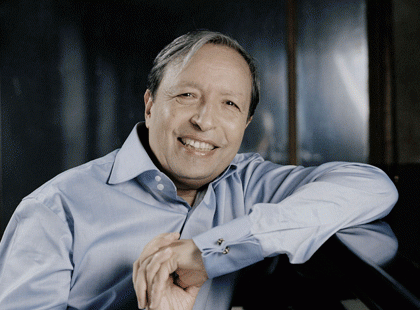Back at last, Perahia redefines the familiar with supreme artistry

It has been a few seasons since Chicago has been treated to a Murray Perahia recital. Perahia had agreed to substitute for an ailing Maurizio Pollini in April of 2011, but Perahia himself ended up canceling, feeling that he had not sufficiently recovered from a hand injury that had sidelined him completely from a 2010 tour that was to have included Chicago.
On Sunday afternoon at Symphony Center, Perahia was there, at long last, in a blue suit, white shirt and a long silver tie that matched his now-silver hair, holding court at the piano as only the American pianist can.
Haydn’s Sonata in D Major (Hob. XVI:24) began the program, a delightful surprise not only because Perahia has performed and recorded so little Haydn, but also because of the flair and charm that was brought to this music. Many pianists program Haydn merely for stylistic variety but Perahia only plays music that he feels strongly about.
How wonderful for us that Haydn is starting to come under his poetic scrutiny. Perahia brought a light touch and brisk pace to the Allegro, slowing down slightly for the development section. The Adagio was surprisingly sprightly yet sensitive and the Presto finale crowned the piece with a grand dose of optimism and humor.
Likewise, Schubert’s Moments musicaux, D. 780, is also new music for Perahia, his extraordinary level of concentration and polish carefully applied to each of the six miniatures revealing something new about the character of each one as well as the set as a whole.
With restrained pedaling and careful touch, he brought out the classical aspects of No. 1 and the Bach-like quality to No. 4, which helped set off the bravura Romantic character of Nos. 5 and 6 in sharper relief.
The Schubert formed a wonderful contrast with Schumann’s Faschingsschwank aus Wien, Op. 26, which Perahia sees not as mere effects-laden music but as a whimsical cycle with organic unity throughout, almost a theme and variations.
The torturous cross-handed section and the choppy chords that precede it have rarely been made to sound so deceptively legato, a technical feat in itself, all the more remarkable that it was done with such translucence. Seldom has the often underrated and routinely overplayed Schumann been represented with such sterling advocacy: this turned out to be the unexpected highlight of the afternoon.
The standard repertoire performed was no less revelatory, Beethoven’s Moonlight Sonata in C-sharp minor, Op. 27, No. 2 was performed with daring delicacy and some of the most expressive use of rubato imaginable.
Chopin’s Impromptu in F-sharp minor, Op. 36 made use of free-fall arpeggios so even, legato, nuanced and bell-like in their tone that it was almost Rubinstein-like. The Scherzo No. 1 in B minor, Op. 20 made a dazzling finale to the afternoon that brought a well-deserved standing ovation.
Encores were a surprisingly introspective Brahms Intermezzo in C Major, Op. 199, No. 3 and the Schubert Impromptu in A-flat Major, D. 899, No. 4.
Posted in Performances




